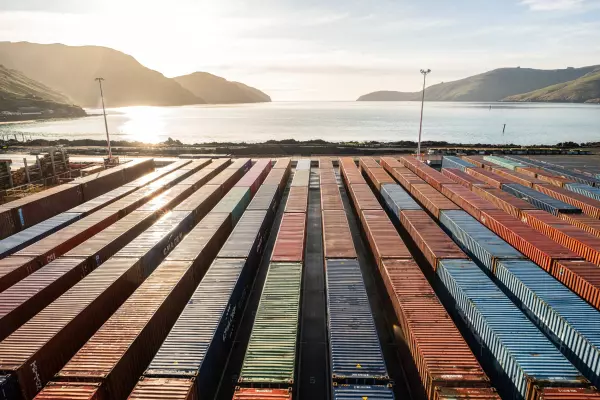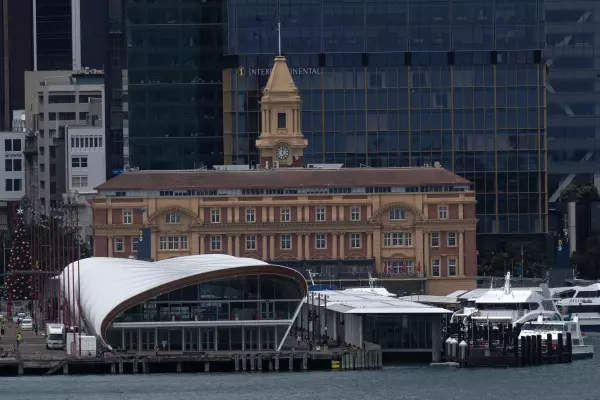Councils and developers may find it difficult, if not impossible, to build new roads and wetlands in parts of Canterbury as a result of a court decision involving controversial water bottlers.
Environment Canterbury (ECan) says it’s obliged to implement its regional plan as directed by the court, but experts are warning the new consenting approach could seriously impede development and are calling on the regional council to find a sensible solution.
ECan has looked again at its approach to certain consenting groundwater 'takes' in light of the court decision on the water bottling consent. The legal arguments are complex, but the end result is consents involving road drainage and wetlands may be prohibited or difficult to get in some areas.
Cameron Mars, a water and environmental engineer at Eliot Sinclair, said the change could send developers out of business, due to costly delays, or lead them not to develop in particular areas altogether.
“We need to emphasise that there is no practical alternative and that this ruling will stop development within the region and may have an effect nationally,” he said.
Local councils, including Christchurch city and Waimakariri district council, are working on the issue with ECan.
How did we get here?
In July, after a long-running legal battle, the court of appeal sided with advocacy group Aotearoa Water Action and moved to quash consents issued by ECan to water bottling companies Cloud Ocean and Rapaki Natural Resources.
The companies had both bought properties in Canterbury with existing consents to take and use water for a wool scourer and a freezing works, but wanted consent from ECan to change the use to water bottling.
Essentially, the case rested on whether ECan was able to grant consent for the ‘use’ of water separately (that is, in this case granting a new use for an existing take) as opposed to the ‘take and use’ of water.
The court of appeal found the relevant regional plan, the Canterbury Land and Water Regional Plan (CLWP), consistently treated ‘take and use’ together and that the council was wrong to use a catch-all rule in the plan to grant the consents, something it had been doing because there was no specific rule governing a standalone ‘use’ of water.
As a summary of the case says: “Consequently, the council did not have the ability to grant resource consents limited to the use of the water for bottling purposes separately to consents to take the water to be used for that purpose.”
This has repercussions for how ECan assesses consent applications for things like roading underdrains and wetlands that intercept groundwater, which now have to be assessed against specific 'take and use' rules as opposed to the catch-all rule.
Stuff has reported that Cloud Ocean intends to appeal the decision.
In plain English?
In parts of Canterbury with high groundwater, engineers building a road will install underdrains below the subgrade layer to divert away groundwater and prevent erosion.
As Mars put it, the effect is localised. The underdrains only lower the water table by a small amount and they don’t affect other water users, he said.
Before the court of appeal decision, ECan consents planning manager Aurora Grant said the council assessed underdrains as ‘takes’ without a ‘use’. Because they didn’t fall under the normal ‘take and use’ rules in the regional plan, ECan processed them under the catch-all rule referred to in the court decision.
Consents for stormwater treatment wetlands where groundwater was intercepted but discharged without any use were treated the same.
As a result of the decision, Grant said ECan could no longer look at standalone ‘takes’ under the catch-all rule because the regional plan linked takes to uses. Instead, applications had to be dealt with under the relevant take and use rules.
“In fully allocated or over-allocated zones, activities that cannot comply with the rules become prohibited activities for which no application can be made,” Grant said.
“Developers have options to design their activity in a way that provides the positive environmental outcomes sought by our planning framework, but this requires a different approach from that which has been acceptable in the past due to the court of appeal decision.”
Wetlands, blocked
In Waimakariri, an area north of Christchurch, the outcome of the court decision is already proving frustrating.
A spokesman for the district council said as a result of recent regional plan changes the area between the Waimakariri and Ashley rivers was considered an overallocated groundwater zone.
Combined with the new consenting approach, this was resulting in difficulties for the council, which recently applied for a consent for a stormwater management area in Ohoka.
“Despite the fact that intercepting the groundwater is an unintended consequence – it is being returned to streams and ground via soakage, and the basin will reduce effects downstream – it is currently being interpreted as a ‘take’, and therefore we have been informed it is prohibited in this area,” the spokesman said.
“It is currently not possible to obtain consent for any infrastructure which intercepts and requires ongoing drainage of shallow groundwater in these locations.”
As a result of the new interpretation, some stormwater treatment wetlands were being redesigned to be raised above the water table, the spokesman said.
Raised wetlands would likely require stormwater to be pumped up into a basin, a process which would result in extra cost and energy consumption.
The council believed the option was suboptimal for other reasons, too. Wetlands that interacted with groundwater had cooler, circulating water which was better for animal and fish life.
“The loss of new wetlands that interact with groundwater will mean fewer functioning wetlands are constructed in future with the associated loss of any new biological corridors that would have connected new development areas with existing natural wetlands and waterways,” the spokesman said.
Mars didn’t believe the new consenting approach was due to environmental reasons, saying it was absurd that activities that had been accepted practice for many years were now considered prohibited.
He wanted ECan to fast-track a plan change to deal with the issue and to take pragmatic steps in the interim to avoid disrupting planned developments.
“The current regional plans do not cater specifically for infrastructure such as roads or stormwater wetlands, rather ECan is trying to apply rules which were created for activities such as irrigation schemes or drinking water supply bores.”
Conversations, but quickly
BusinessDesk approached other councils in the area to understand the impact of the court decision on their infrastructure plans.
Tim Drennan, the acting head of three waters at Christchurch city council, said the council was aware of the recent changes to how consents were assessed and was working through this with ECan.
“Council is committed to progress these conversations as quickly as possible because any delays will impact current and future projects including the Ōtārako Avon River corridor project, as well as wetlands and stormwater basins.”
Grant, from ECan, said the regional council recognised the decision had potential repercussions for developers and other infrastructure providers.
“We note, however, that prohibited activity rules are in place to protect the environment from further over-allocation and that developers/infrastructure providers have a role in thinking about the way they design projects to minimise interception of groundwater, particularly where it is over-allocated.”
According to Mars, it would be difficult to find cost-effective alternatives to roading underdrains that would be acceptable to local authorities. And simply raising roads in flood-prone areas would redirect flooding to other properties.
Grant said ECan was legally required to implement its plan rules as written and as directed by the court of appeal. In the longer term, she said the situation might be addressed via a future planning process.














